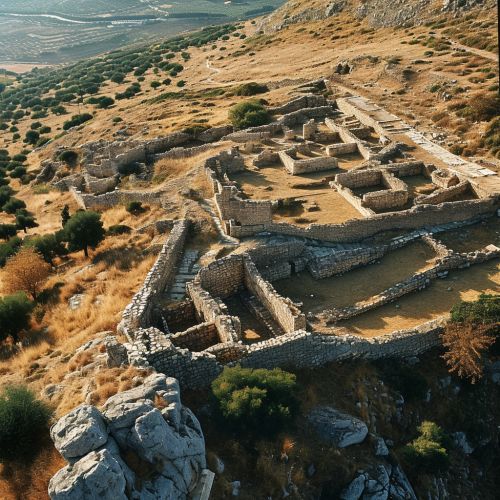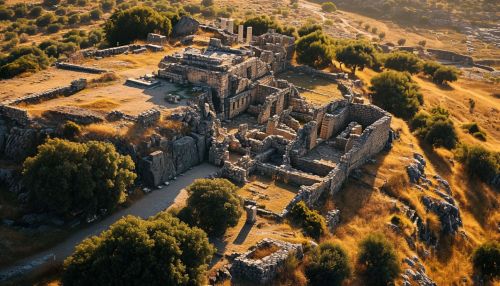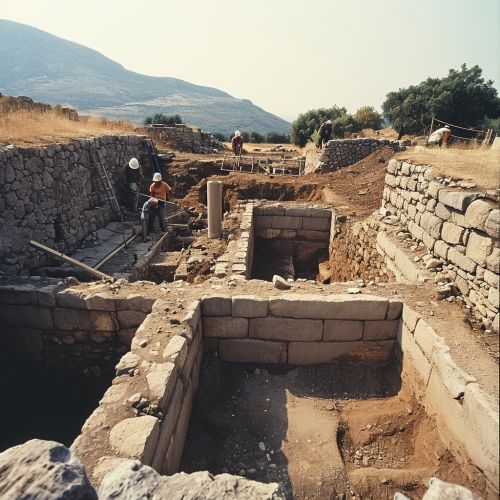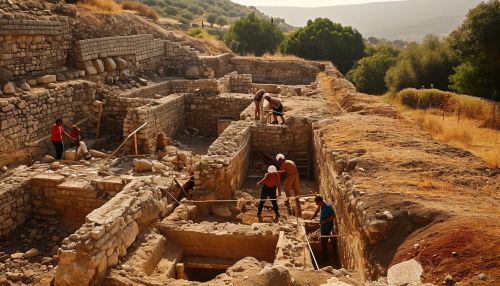Mycenae
Introduction
Mycenae is an archaeological site in Greece, located about 90 kilometers southwest of Athens, in the north-eastern Peloponnese. In the second millennium BC, Mycenae was one of the major centers of Greek civilization, a military stronghold which dominated much of southern Greece, Crete, the Cyclades, and parts of southwest Anatolia.


History
The period of Greek history from about 1600 BC to about 1100 BC is called Mycenaean in reference to Mycenae. The historical events and characters mentioned in the works of Homer are associated with Mycenae and the Mycenaean civilization. The Mycenaeans are credited with being the first Greeks to develop a complex civilization, which included a high degree of organization, sophisticated architecture, and a writing system.
Origins
The site of Mycenae was inhabited by small groups of people as early as the Neolithic period. Around 2100 BC, a new group of people arrived, probably from the east, and established a more sophisticated culture.
Mycenaean Period
The Mycenaean Period (approximately 1600–1100 BC) represents the first advanced civilization in mainland Greece, with its palatial states, urban organization, works of art, and writing system. The most prominent site was Mycenae, in the Argolid, after which the culture of this era is named.
Decline
Around 1100 BC, the Mycenaean civilization collapsed. Numerous cities were sacked and the region entered what historians see as a dark age. During this period, Greece experienced a decline in population and literacy. The cause of the collapse is a matter of ongoing debate among historians and archaeologists.
Archaeology
The archaeological site of Mycenae near the village of Mykines, Argolis, Peloponnese, Greece, has been a place of intense archaeological interest and research for more than a century. The site is located on a small hill, and its strategic position allowed the inhabitants to control the surrounding plains.


Excavations
The first excavations at Mycenae were carried out by the Greek archaeologist Kyriakos Pittakis in 1841. He found and restored the Lion Gate, the main entrance of the Bronze Age citadel of Mycenae, in 1848. In 1874, Heinrich Schliemann arrived at the site and undertook a complete excavation. Schliemann believed in the historical truth of the Homeric stories and interpreted the site accordingly. He found the ancient shaft graves with their royal skeletons and spectacular grave goods. Upon discovering a human skull beneath a gold death mask in one of the tombs, he declared: "I have gazed upon the face of Agamemnon".
Findings
The archaeological findings in Mycenae include tombs, walls, buildings, and artifacts. The most famous findings include the Mask of Agamemnon, a funeral mask crafted in gold, and the Lion Gate, the main entrance of the Bronze Age citadel of Mycenae, Greece.
Architecture
Mycenaean architecture was grand and monumental, reflecting the power and wealth of the Mycenaean civilization. The most notable architectural remains at Mycenae are the tholos tombs, the palace complex, and the fortifications.
Tholos Tombs
The Tholos tombs of Mycenae are some of the largest and most complex burial structures from the ancient world. These tombs had a circular plan and were covered by a high corbelled vault.
Palace Complex
The palace complex at Mycenae was a large and elaborate structure. It was built around a central hall, or megaron, which was the focal point of the complex. The megaron was a rectangular room with a central hearth and four columns supporting a high roof.
Fortifications
The fortifications of Mycenae were massive and complex, designed to protect the city from invaders. The most famous part of the fortifications is the Lion Gate, a monumental entrance decorated with high-relief sculpture.
Culture
The Mycenaeans were influenced by the Minoan civilization from the island of Crete who preceded them. This is evident in the larger palaces, or megaron, that were built and the increased use of luxury goods.
Art
Mycenaean art is known from a wide range of media including frescoes, goldwork, and seal stones, and examples have been found not only on the Greek mainland but also through the Aegean islands, the west coast of Asia Minor, and in Cyprus.
Religion
The Mycenaeans were polytheistic, worshipping a wide range of gods and goddesses, but their religion was not as fully developed as that of the later Greeks. The pantheon of gods included many that would later become important in the classical period, such as Zeus, Hera, and Poseidon.
Writing
The Mycenaeans used a script, known as Linear B, which was an early form of Greek. The script was used for administrative purposes and to record economic transactions. The tablets on which the script was written were baked clay, and were used for temporary records, which were discarded after their contents had been transferred to more permanent media.
